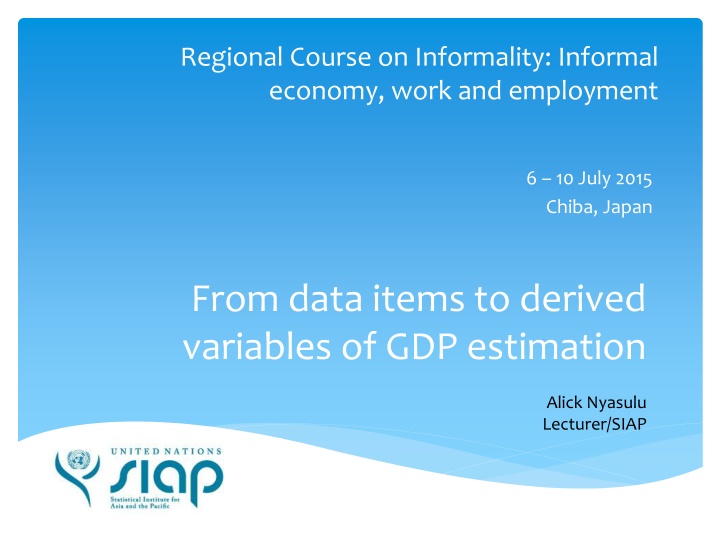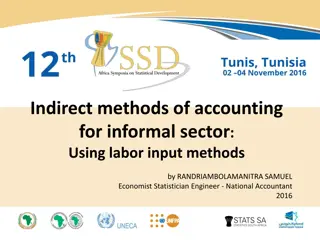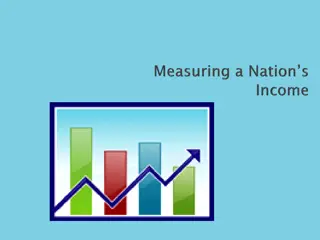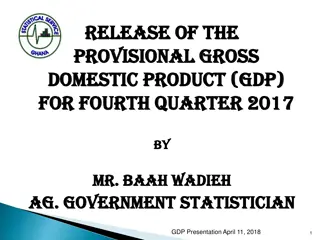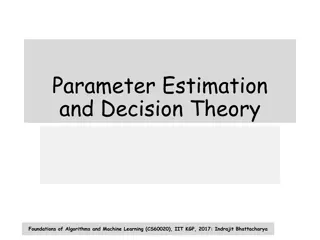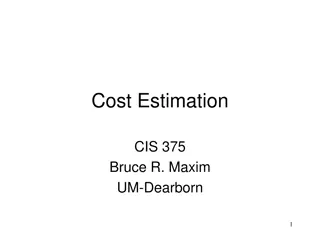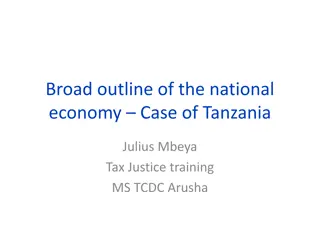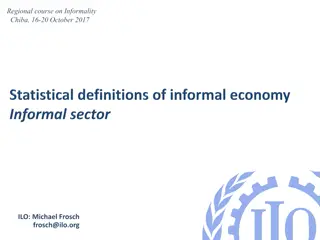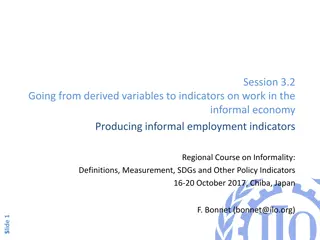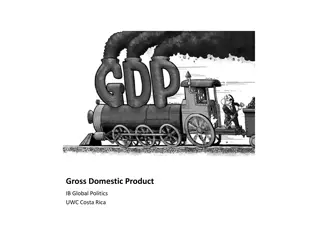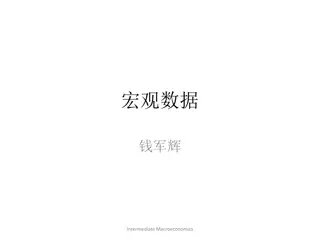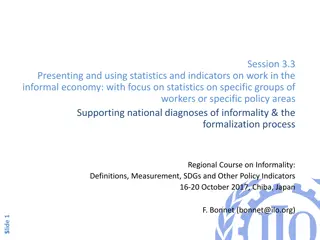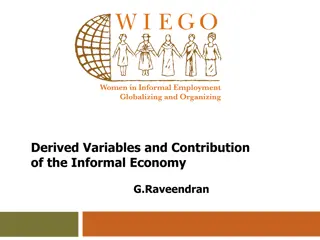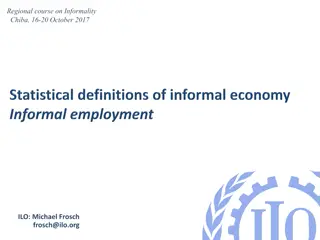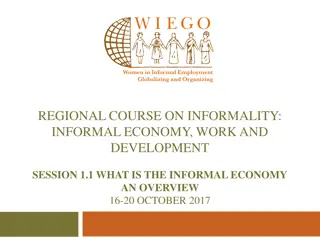Informal Economy and GDP Estimation Methods
This informative content covers a regional course on informality, focusing on the informal economy, work, and employment. It discusses using data items to derive variables for GDP estimation, learning objectives related to GDP questionnaire entries, conceptual foundations of the informal economy, GDP aggregates through the production account, and case studies from Mongolia on survey approaches and collecting informal sector enterprise data.
Download Presentation

Please find below an Image/Link to download the presentation.
The content on the website is provided AS IS for your information and personal use only. It may not be sold, licensed, or shared on other websites without obtaining consent from the author.If you encounter any issues during the download, it is possible that the publisher has removed the file from their server.
You are allowed to download the files provided on this website for personal or commercial use, subject to the condition that they are used lawfully. All files are the property of their respective owners.
The content on the website is provided AS IS for your information and personal use only. It may not be sold, licensed, or shared on other websites without obtaining consent from the author.
E N D
Presentation Transcript
Regional Course on Informality: Informal economy, work and employment 6 10 July 2015 Chiba, Japan From data items to derived variables of GDP estimation Alick Nyasulu Lecturer/SIAP
Learning objectives Data items for GDP using questionnaires for informal sector surveys Understanding the questionnaire entries Derive GDP aggregates
Conceptual Foundation Informal economy Circular Flow of Money an Exchange Economy Income from enterprises to households Enterprises: Businesses & govt. services Households Primary Income from RoW (net) Consumption expenditure government expenditure Flow of taxes (less subsidies) Government Government surplus Private savings Financial market Investment expenditure Net capital inflow
GDP aggregates-The Production Account Measures Uses Resources Total economy Transaction category Total economy Transaction category Output 1325 Intermediate consumption Products sold (at basic price) 870 1259 For own use 23 Non-market 43 (t-s) on products & import duties 126 GDP 1325-870=455 4
Case Study: Mongolia A. Survey of HUEM (non-agricultural and non- mining) Survey approach: 1-2 method, recommended by UNESCAP and DIAL In phase 1: Informal employment defined through LFS. Questions for identifying HUEM: 1. Worked hours in the last 7 days 2. Regular work 3. Employment status 4. Economic activity 5. Type of enterprises 6. Private sector of employment 7. Activity of enterprise 8. Sell or barter its goods, services 5
Case Study: Mongolia In phase 2: Informal sector enterprise data is collected by independent module of the questionnaire. Main indicators: Organization and status of the business Employment Production and sales Business expenditure Information of transportation and owner occupied dwellings Estimate the number of employment, turnover and VA 6
Production of Goods-Data Items 100 20 2000 10000 20000 Rice Fruit Juice Livestock-Eggs 2 2 5000 10000
Production of Services-Data Items 50 30 Car Repairs 20 1000 1500 50 30 Restaurant Services Tyre Fitting 900 30
Intermediate Costs-Data Items 4000 5000 6000 10000 Purchases for resale Transport costs Utility costs-water, gas Raw materials 25,000
